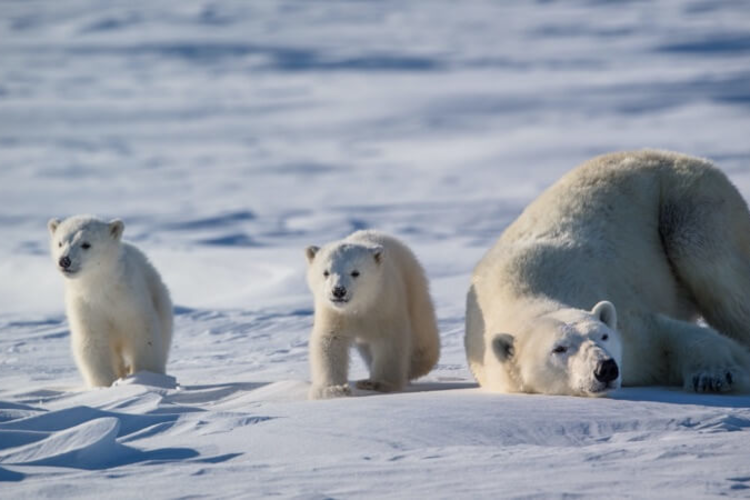As I sit in my warm office and look at the little dots on the map in front of me, it's hard to believe that those dots are female polar bears roaming around the frozen Hudson Bay in freezing cold temperatures.
I'm currently tracking 18 polar bears with GPS collars, all collared from the Western Hudson Bay population. I get new locations emailed to me every four days (though not every collar transmits regularly) and then it's just a case of plotting the points on a map to see where the bears have moved this week. GPS collars are an amazing tool for researchers because they allow us to see how individual bears move differently in terms of location and speed, information impossible without GPS. Already, I can see that some bears have moved quite far east across Hudson Bay, while some are sticking closer to the west coast. Some bears have decided to travel north this winter, while others are checking out of the south of the Bay. I wonder why?
It's possible that each polar bear is just doing what its mother taught it to do as a cub, and its mother before her, and so on. We do know that mother polar bears teach their babies when and where to get on and off the ice, where to travel, and, very importantly, how to hunt. In fact, many of our collared polar bears have cubs with them right now and are likely teaching them how to hunt seals. Hopefully they are finding plenty of food this year, but the most important time of the year will be in a couple months when the seal pups are born. That is when polar bears will do their most intense period of hunting; maybe the cubs will have learned enough by then to help out!
Another interesting aspect of mapping the bears throughout the year is finding out which bears have not moved onto the ice. This could be one of two things: either the collar has dropped off and is lying on the ground far from any bear, or the polar bear is denning. If the bear is denning, then she has most likely given birth in the last couple weeks and is busy nursing her new cubs right now. She will emerge with her cubs in 6-8 weeks and will head out onto the sea ice with her new babies. By this time, mom won't have eaten for almost 8 months, so she'll be hungry!
All in all, the polar bears still have a long, cold winter ahead of them while they roam around hunting seals and teaching their cubs the way of the white bear. They live a very solitary lifestyle and are far from any human contact, so we are very lucky to have those GPS collars. This way, we have an idea of what is happening to some of Canada's polar bears way out on the sea ice, even as we sit at our warm desks in a big city.
Alysa McCall is director of conservation outreach and staff scientist for Polar Bears International.
















